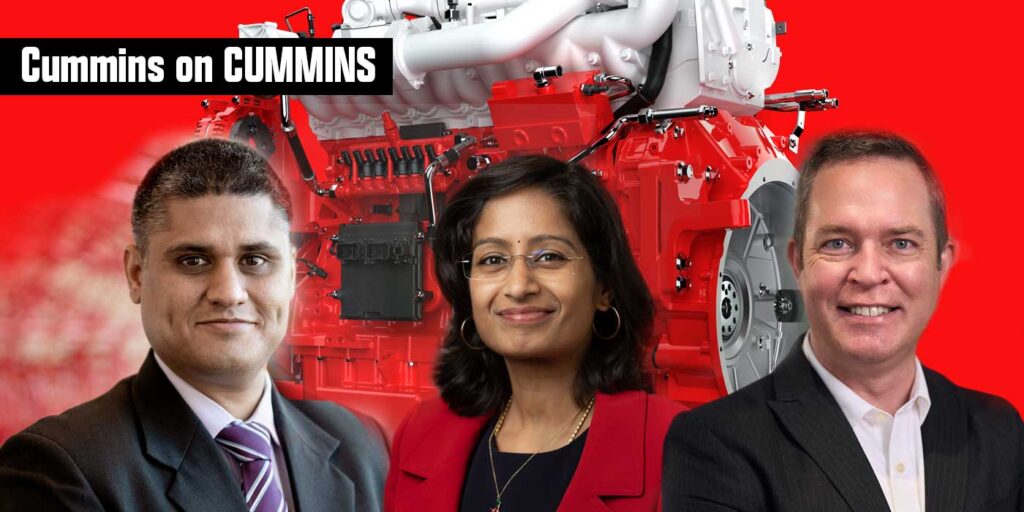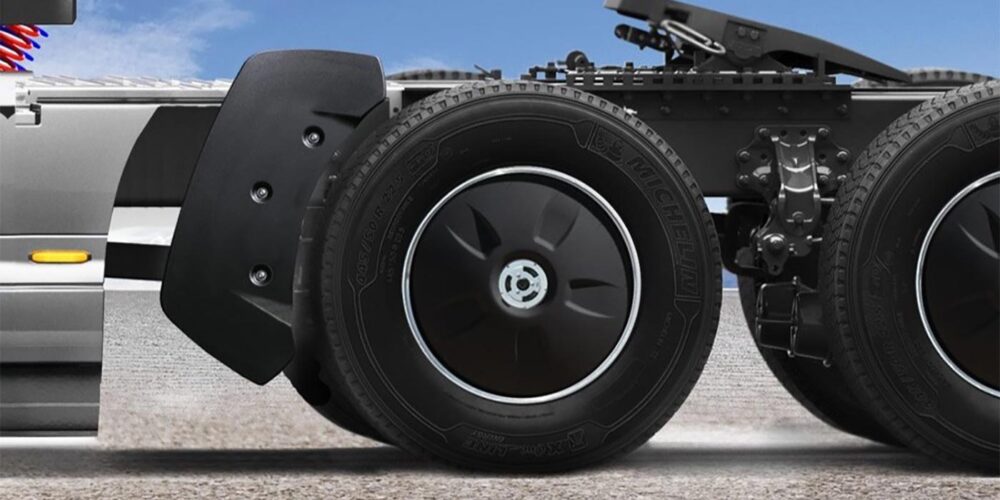The hardest part about planning the future of trucking equipment is that there are no clear-cut answers. Yes, diesel engines will still power the world for the time being, but decarbonization shifts are happening. Battery electric trucks are rolling in regional haul applications and investments are being poured into hydrogen fuel cell development. To complicate matters, there is one decarbonization certainty: You can’t wait for a magic bullet solution.
“Decarbonization starts today. That’s our mentality on how we’re approaching our products,” said Uma Vajapeyazula, product strategy, Cummins. “We’re not going to wait for the infrastructure to be ready for things to work out perfectly. We’re going to figure out how we start decarbonization as we build our product portfolios.”
Most immediately, that means moving toward a fuel-agnostic engine platform, evolving the Cummins X- and B-Series engines. Diesel will still be a core offering, but natural gas, gasoline, propane and even hydrogen Cummins engines will come to market. In fact, the most recent announcement was that PACCAR will offer the Cummins X-15N natural gas engine in Peterbilt and Kenworth trucks. On top of that, gasoline engine prototypes of the Cummins B6.7 were put through their paces on a test track in Columbus, Indiana, during a recent press event. The fuel agnostic engine platform transition is happening, with the goal of lowering emissions.
“We’re driving reductions in NOx, we’re driving reductions in CO2, we’re championing decarbonization efforts,” Vajapeyazula said. “We want to bring lower NOx products to the market without disrupting the industry or making the products too complex, expensive or unreliable. We’re trying to partner with alternate fuel providers that will play a big role. The questions we face are: How do you make it renewable? How do you bring natural gas in a big way to the market? How do you create incentive for the hydrogen infrastructure to pick up?”
Critics might say that those solutions are great, but they’re still producing emissions. That’s true, but reducing emissions right now adds up to big environmental savings in the near term. Those savings compound over the long term.
“The way I look at it is if you have 100,000 vehicles on the market, and I improve the carbon efficiency by 10% by lowering the greenhouse gas from our portfolio by 10%, then that’s the equivalent of putting 10,000 electric vehicles on the road at the same cost as diesel, same assets, no new technologies, no recharging concerns, and no infrastructure dependency,” Vajapeyazula explained. “That is an impact we can make today.”
In regional haul applications, Cummins sees battery electric powertrains as a reality when the application range is 200 miles or so. Its recent acquisition of Meritor and its partnership with Isuzu to power battery electric trucks shows the engine manufacturer is serious about electrification. Long-haul applications are a different decarbonization story.
With Cummins’s fuel-agnostic engine approach, the question is no longer: “How will these fuels work in an engine?” The engines (in the case of natural gas and diesel) exist today. You can actually order one. So the question is: “How will fuels like renewable diesel and natural gas, and even hydrogen when it’s ready for prime time, be supported in the market? And most importantly, how will fleets make money with them?”
For those answers, let’s dive into the engine details. Click below to read more on Cummins’s approach to a specific engine technology.
The power density of diesel (and its decarbonization impact)
Natural gas engines in the Now: Potentially poised for growth














